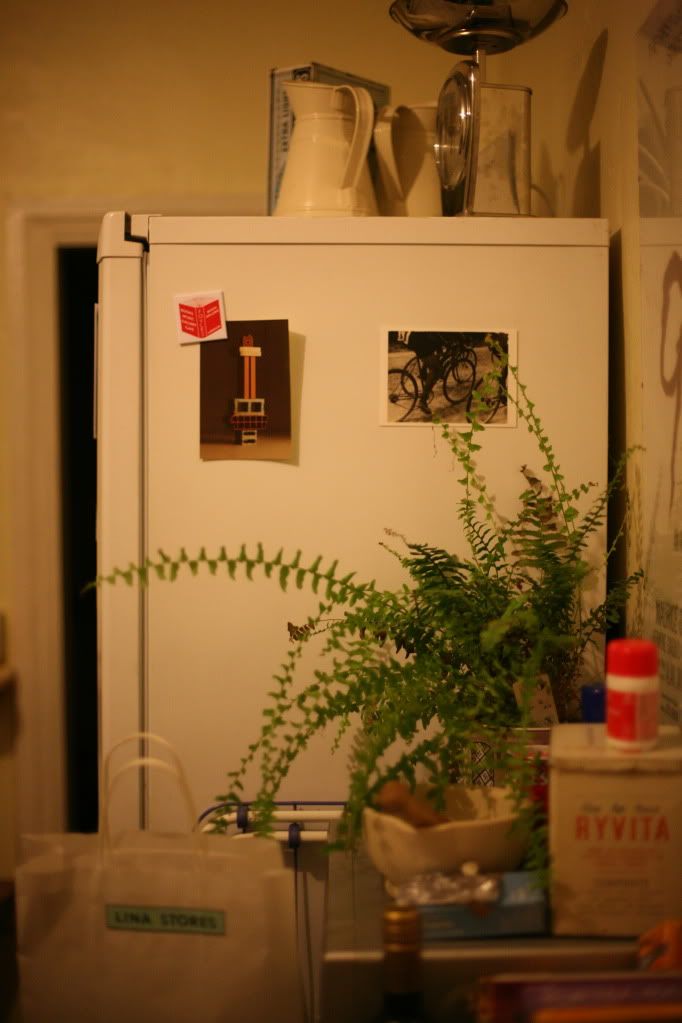Today I visited the ICA for the latest in their series of culture now talks, with this instalment being delivered by Hal Foster. His newly published book looks at ways in which contemporary art and architecture have informed each other, something he terms the art-architecture complex, and the implications of this. In his talk he discussed various threads of the book in relation to specific examples of architecture, from architects such as Norman Foster, Richard Rogers and Renzo Piano who he described as being exponents of a 'global style' of design, to Zaha Hadid and Herzog and de Meuron, whose stylistic influences drawn from such historical artistic avant-gardes as Russian constructivism he was particularly sceptical of. He noted how these buildings are essentially images first and foremost - glittering beacons of modernity that have no grounding in site or locality (think the ostentatiousness of the Shard).
There was also a trajectory in his line of thought from the minimalism he has discussed at length before in his career and the spatial concerns of contemporary architecture today. Interesting was his disdain for how the buildings discussed aspired to create a sense of 'lightness of being', and how these buildings were aspiring to a sense of modernist 'transparency' - making the materials of the building visible - but in fact were creating an air of mystification and illusion. Rather than an experience being activated by the subject and their relation to the space - as with minimalism - the space itself creates the experience, and this is a negative, Foster posed.
Since it began to rise above its surroundings on the south bank of the Thames I've found the Shard incredibly disconcerting. As Hal Foster noted in his talk, it really does have no connection or awareness of its immediate surroundings in London Bridge and its sheer height really does make it difficult to come to terms with. I've always found its juxtaposition with the brutalist, modernist tower it sits next to a poignant happenstance - as Andrew Marr pointed out in his recent television series on megacities, here is London's glittering beacon of modernity, casting a shadow over the eyesore that once heralded another moment of modernity but that now is a drab, grey, monstrous lump of concrete. And yet it was this concrete and the aforementioned transparency of materials that formed the core of the modernist project, analogous to them with a transparency in all aspects of democratic life. What is so democratic about the Shard, rising high above all around it?
"We need to make a building that doesn't shut people out, one that responds to local as well as city-wide needs. A building of this scale, this ambition, cannot be just for private gain: it becomes a public project privately financed." - Renzo Piano on The Shard








 When I'm not out at college in the studio one of my favourite places to spend time is in the kitchen of our house in Ealing. Over the summer we managed to grow a little of our own produce despite being away much of it, the cabbages in particular were delicious fried in olive oil and garlic. I've also been able to try my hand at pasta thanks to Dulcie buying me my own Imperia Pasta Maker for my birthday back in September, using Tipo 00 flour from the amazing Lina Stores on Brewer Street in Soho. Of course, Fred the cat is never far away, demanding his dinner or more often a little attention!
When I'm not out at college in the studio one of my favourite places to spend time is in the kitchen of our house in Ealing. Over the summer we managed to grow a little of our own produce despite being away much of it, the cabbages in particular were delicious fried in olive oil and garlic. I've also been able to try my hand at pasta thanks to Dulcie buying me my own Imperia Pasta Maker for my birthday back in September, using Tipo 00 flour from the amazing Lina Stores on Brewer Street in Soho. Of course, Fred the cat is never far away, demanding his dinner or more often a little attention!










































